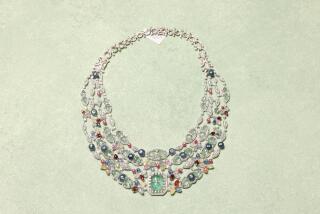How to Find the Good Stuff
- Share via
Some tips for buying and investing in jewelry:
* Select a reputable dealer. Suggestions from family or friends may be helpful. Otherwise, visit several stores and compare the quality of products, prices and services. Is there a gemologist on staff? Have there been any complaints to the Better Business Bureau?
* Beware of bogus sales. Some dealers constantly hold “70% off” sales, but you don’t know what they are discounting from if the promotions don’t end. A sale is a true sale if the merchandise is discounted for a period of time, then returned to the higher, regular price.
* Put it in writing. Purchases should be described in a bill of sale just as it was explained by the salesperson. For diamonds, the carat weight, color and flaw grades should be noted. For colored gemstones, it should be stated whether the stone is genuine or synthetic, among other things. Some dealers may make a sale contingent on verification by a gem-testing lab.
* Get an independent appraisal. Besides verifying facts about the piece, an appraisal is needed for insurance. Trade groups like the American Gem Society in Los Angeles can provide lists of appraisers. Auction houses like Christie’s in New York also offer free verbal appraisals.
* Get insurance. Since standard homeowners’ policies cover only a portion of jewelry losses, additional coverage is needed. But not all policies are equal. For instance, many companies won’t reimburse the “full value” of the item but rather exercise a “replacement” option.
* Beware of telemarketers. Gemstone investments can be profitable, but millions of dollars have been lost in sophisticated telemarketing schemes. The pitch may seem legitimate: gems offered at “wholesale prices” and shipped in sealed containers with convincing reports from gem-testing labs.


